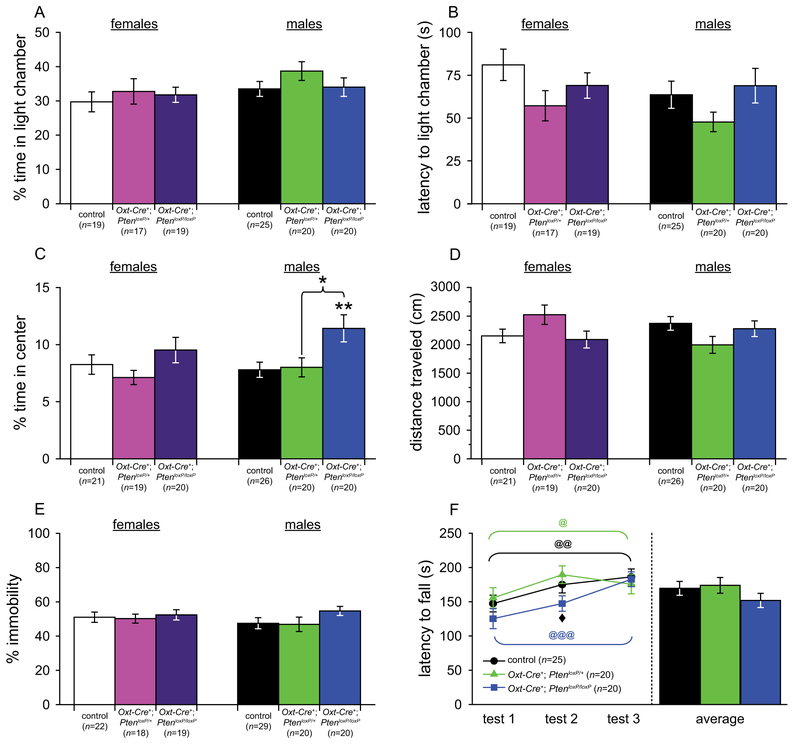Figure 3.
Tests of anxiety-like, depression-like, and motor learning behavior in Oxt-Cre+; PtenloxP mice. (A,B) Dark-light emergence test for anxiety-like behavior in control (n = 19), Oxt-Cre+; PtenloxP/+ (n = 17), and Oxt-Cre+; PtenloxP/loxP (n = 19) females and control (n = 24), Oxt-Cre+; PtenloxP/+ (n = 20), and Oxt-Cre+; PtenloxP/loxP (n = 20) males. (C,D) Open field test for anxiety-like and locomotor behavior in control (n = 21), Oxt-Cre+; PtenloxP/+ (n = 19), and Oxt-Cre+; PtenloxP/loxP (n = 20) females and control (n = 26), Oxt-Cre+; PtenloxP/+ (n = 20), and Oxt-Cre+; PtenloxP/loxP (n = 20) males. (E) Tail suspension test of depression-like behavior in control (n = 22), Oxt-Cre+; PtenloxP/+ (n = 18), and Oxt-Cre+; PtenloxP/loxP (n = 19) females and control (n = 29), Oxt-Cre+; PtenloxP/+ (n = 20), and Oxt-Cre+; PtenloxP/loxP (n = 20) males. (F) Rotarod test of motor learning and behavior in control (n = 25), Oxt-Cre+; PtenloxP/+ (n = 20), and Oxt-Cre+; PtenloxP/loxP (n = 20) males. Significant differences between genotypes: *P < 0.05, **P < 0.01. Significant improvement over trials: @P < 0.05, @@P < 0.01, @@@P < 0.001. Significant difference between Oxt-Cre+; PtenloxP/+ and Oxt-Cre+; PtenloxP/loxP males, ◆P < 0.05.

